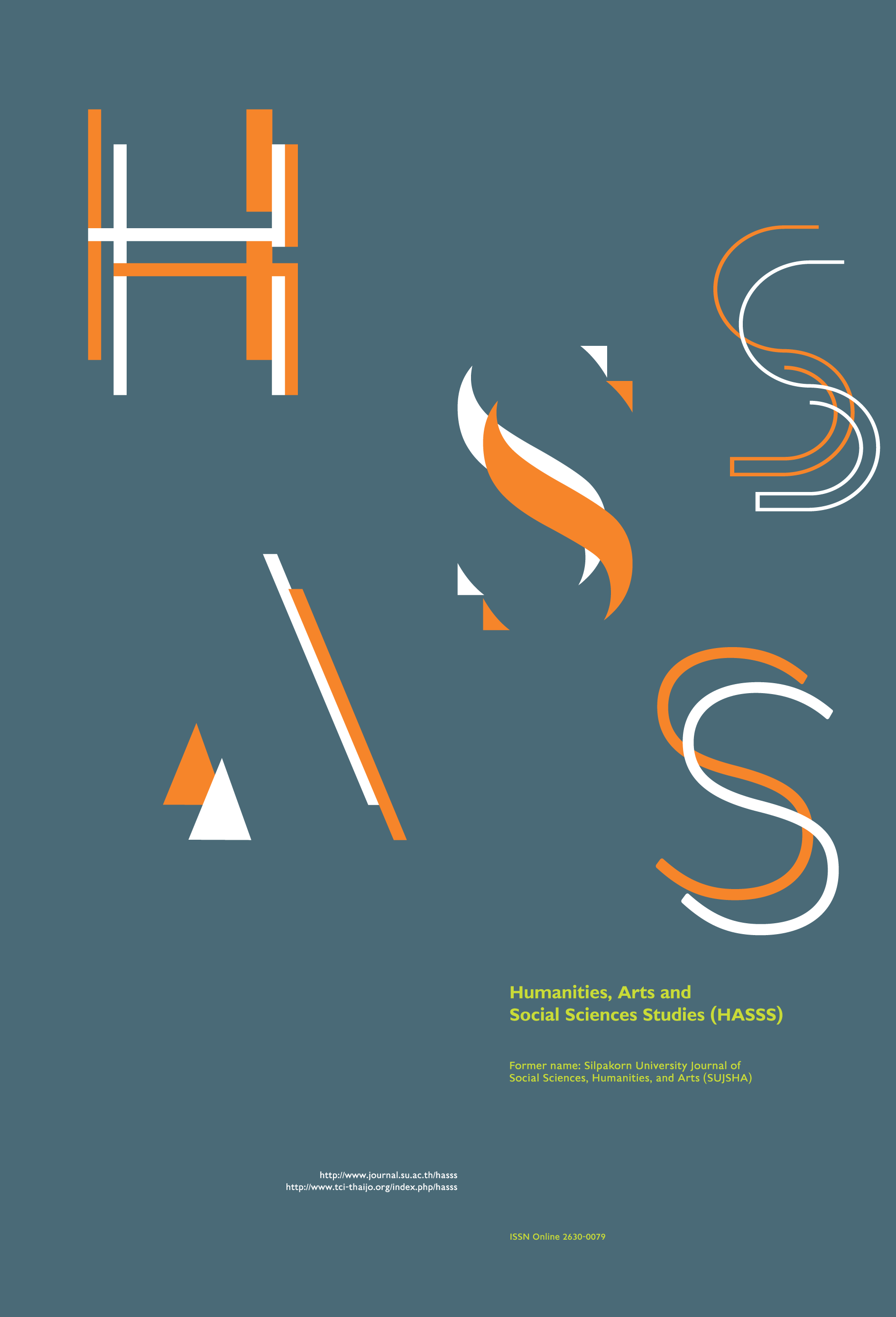Comparison of Traditional Intricate Paper Cutting Techniques of Southern Thailand: Traditional and Modern Style
Main Article Content
Abstract
Intricate paper cutting techniques of Southern Thailand are a type of traditional craftsmanship, which is a valuable art form of the country. This knowledge has been inherited from one generation to the next. This study collected and compiled data regarding traditional intricate paper cutting, focusing on techniques from southern provinces, where their unique identities are retained. The data comprises history, paper characteristics, cutting techniques, patterns, instruments, designs, and practical purposes. Findings revealed the significant distinctions that artisans in Songkhla province use traditional style, whereas artisans in Nakhon Sri Thammarat province use modern style. It is noteworthy that some artisans still retain the ritual of master veneration. These rituals are performed only with disciples considered worthy of inheritance and skilled enough to make a living with this craft.
Downloads
Article Details
All rights reserved. Apart from citations for the purposes of research, private study, or criticism and review,no part of this publication may be reproduced, stored or transmitted in any other form without prior written permission by the publisher.
References
Chansoon, S. (1991) What is Folk Wisdom? Where? Journal of Improving the Quality of Life for Northeast People Primary Health Care 7(2): 14.
Chumphengphan, P. (2001) The Way of Life of Southern Thai People: Customs and Culture. Bangkok: Children’s Club Press.
Department of Cultural Promotion, Ministry of Culture. (2014) Intellectual Cultural Heritage. Bangkok: Department of Cultural Promotion, Ministry of Culture.
Kriangkraiphet, S. (1997) A Diary of Southern Thai Culture. Bangkok: Dok Yaa Press.
Nakhon Sri Thammarat Province Cultural Office. (2006) Local Artisan Crafts: The Gold Coffin. Nakhon Sri Thammarat: Nakhon Sri Thammarat Province Cultural Office.
Nakhon Sri Thammarat Office. (n.d.) The Origins and History of Nakhon Sri Thammarat Province. [Online URL:https://www.nakhonsitham marat.go.th/web_52/history.php] accessed on June 15, 2015.
Nuankaew, S. (1997) The Utilization of Local Wisdoms in the Development of an Elementary Local Curriculum of the Elementary Schools in Mae Hong Son Province (Master thesis). Silpakorn University. Nakhon Pathom.
Nuntasuwan, W. (1985) Folk Wisdom in Development. Journal of Social Development 5: 7-8.
Paaknam, N. (1991) The Evolution of Thai Painting. Bangkok: Ek Phim Thai.
Phetcharaphan, C. (2000) Lai Thai Pattern. Bangkok: O.S. Printing House.
Sakunapat, P., et al., (2005) Ecotourism. Bangkok: Saeng Dao Press.
Seesalab, N., et al. (1999) Thai Wisdom. Institute of Culture and Arts Journal, 2(2): 17-32.
Sirirak, P. (2009) The Nod-Naa-Le way on the Sathing Phra Peninsula. [Online URL: https://www.gotoknow.org/posts/437465] accessed on June 19, 2015.
Songkhla Cultural Office. (2008) The Contribution of Cultural and Communal Networks in Cultural Management and Administration: A Case Study of the Rab Thiam Daa custom in Dee Luang Sub-District, Sathing Phra District, Songkhla Province. Songkhla: Songkhla Cultural Office.
Thongdee, I. (1999) Language and Local Culture: Document WPHPHCH 511, Rural Department Studies, Research Institute for Languages and Cultures of Asia [Lecture notes]. Bangkok: Mahidol University.
Tungcharoen, W. (1997) Thai Visual Arts Education, 2nd ed., Bangkok: Ton Or Grammy.
Wasi, P. (1991) National education with folk wisdom. In Seminar Document: Wisdom and Progress of Culture and Rural Development, pp. 82. Bangkok: Office of the National Culture Commission, Ministry of Culture.


